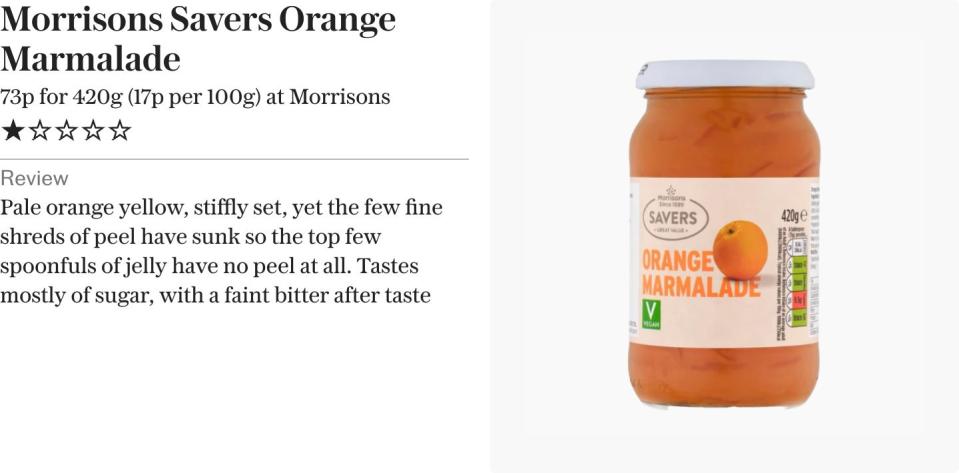What a difference two years makes. First, some good news. The last time I taste-tested marmalade, in September 2022, one of my grumbles was that the manufacturers had replaced some of the sugar in the cheaper brands with glucose fructose syrup, which has been linked with higher rates of diabetes.
Checking the ingredients lists now – and no doubt thanks to the rising awareness of ultra-processed ingredients – the glucose fructose syrup has disappeared from supermarket marmalade. Sure, sugar isn’t going to win any prizes as a health food, but at least it is something that’s used by home cooks.
Less good news is the change in prices. The budget marmalade at Sainsbury’s and Tesco used to come in at 52p for a 454g jar; now it’s 79p, a rise of more than 50 per cent. The Lidl Maribel marmalade was 59p, now it’s 99p, a 68 per cent rise.
Inflation has a lot to answer for. Back in September 22, food inflation was already running at 14.6 per cent per year, peaking in March 2023 at 19.2 per cent, and has now slowed to 2 per cent. But even allowing for cumulative rises, that means that marmalade has well outpaced inflation. And yes, sugar does cost more than glucose syrup, but even so it seems like an almighty price hike.
ADVERTISEMENT
Not a bargain, then, but there’s nothing like marmalade, whether it’s on toast, or in a sandwich, Paddington-style – the latest film has been credited with a spike in sales. In the tasting, I looked for a balance of sweet, tangy and fruity, with that hit of bitterness that marks out marmalade from an orange jam.
It’s worth examining the label, which by law must list the amount of sugar and fruit in the jar. The cheaper brands manage with only 20 per cent fruit, with sugar as the chief ingredient, followed by water. To approximate the flavour and appearance of a higher-fruit marmalade, they add orange juice from concentrate and orange oil, along with colouring. To get it to set they need plenty of pectin as well as acid in the shape of sodium citrate or citric acid – industrially produced chemicals which are not extracted from citrus fruit.
To be fair, even the dearer brands generally pop in a bit of pectin, plus acid, to firm the set, which can make for a hard, grainy gel and (as any home marmalade maker knows) is not necessary. In the blind tasting, the standout marmalade, by Tiptree, was also the only one to include just oranges and sugar. It’s also the most expensive, but Lidl’s Maribel marmalade has a similar flavour and is almost as good – at less than a third of the price. Some more good news for marmalade lovers.

EMEA Tribune is not involved in this news article, it is taken from our partners and or from the News Agencies. Copyright and Credit go to the News Agencies, email news@emeatribune.com Follow our WhatsApp verified Channel





